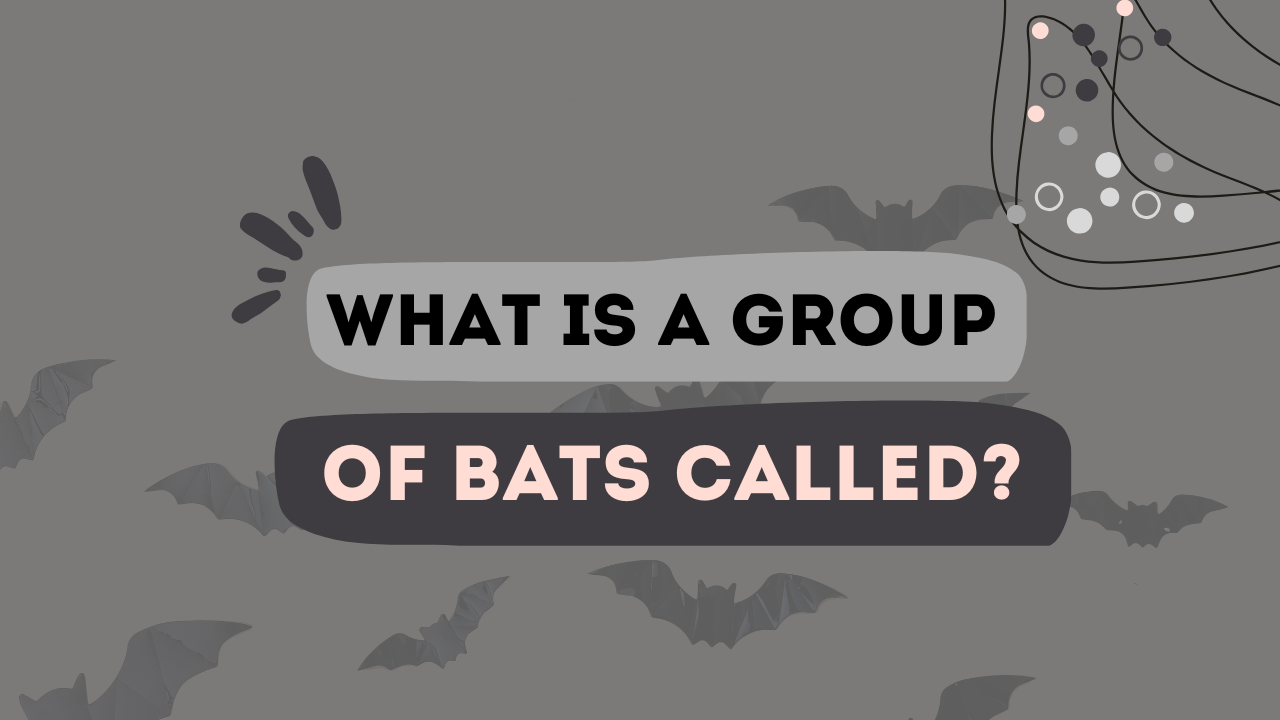Let’s be honest for a moment: have you ever been lying in bed, perhaps reading a creepy mystery or watching a vampire movie, when you wondered, “Wait, what is a group of bats called?” It’s one of those sporadic ideas that just come to you, particularly at Halloween or when you see a bat scuttling at dark. Unbelievably, bats don’t spend all of their time by themselves. They congregate together in their own unique fashion, just like the majority of animals. Indeed, that group has a fancy (and quite hip) name. In this post, we will not only address the urgent subject of what a group of bats is called, but we will also look at some interesting bat facts, how they live, and why their group behavior is more fascinating than you might’ve guessed.
So… What Is a Group of Bats Called?
Please give a drum roll. A cauldron is an arrangement of bats.
Yes, just like a witch’s cauldron, which, don’t you think, perfectly captures their enigmatic, night-flying vibe? There’s more, though. You may also hear the words colony, cloud, or even camp, depending on the situation and bat behavior
Let’s dissect that:
Cauldron: Usually used to describe a flock of bats in flight. It’s ideal for those Horror stories and has a spooky feel.
The most widely used name for bats roosting together, particularly in underground passageways attics, or trees, is “colony.”
Cloud: When there are a lot of bats flying together, some people apply this term to describe how they resemble a dark cloud.
Camp: More frequently used with fruit bats when they are hanging out in trees or other open areas.
So while “cauldron” is the fun and dramatic term that gets all the attention, “colony” is the more practical one used by scientists and wildlife folks.
Why Do Bats Hang Out in Groups Anyway?
Well, it’s not simply for enjoyment, though who knows, maybe it is for them. In actuality, bats are highly gregarious creatures. They can stay warm, defend themselves against predators, and even rear their young by banding together. Imagine it as a large bat sleepover, only without the munchies (apart from insects) and held in a cave or attic.
Millions of bats can live in some colonies. Consider that. Millions of little critters are all hanging upside down and simply vibin’. I’m not sure what will make you say “whoa” if it doesn’t.
Bats Are More Than Just Spooky Flyers
Okay, now that we know what a group of bats is called (you didn’t forget already, right? cauldron… colony… cloud… remember those?), let’s talk about how underrated these little creatures are.
First off, bats are actually really important for our ecosystem. Some of the key things they do include:
- Pollinating plants: Certain bats, especially fruit bats, help pollinate flowers, kind of like bees. Without them, we’d have a much harder time growing things like bananas, mangoes, and agave (yep, tequila lovers—thank bats).
- Controlling pests: One bat can eat thousands of insects in a single night. That’s right, they’re like the ultimate natural bug zapper.
- Spreading seeds: Fruit bats also help with seed dispersal, meaning they literally help grow forests. So next time you’re walking through the woods, maybe thank a bat or two.
Where Do Bat Colonies Live?
So where exactly does a bat colony or cauldron hang out? Good question.
Bats can be found pretty much everywhere in the world, except for super cold places like Antarctica. Depending on the species, they might choose to roost in:
- Caves
- Hollow trees
- Attics and old buildings
- Bridges
- Tunnels
They’re not super picky, honestly. If it’s dark, safe, and protected, it’s probably good enough for a bunch of bats to crash during the day.
And don’t worry—they’re not out to suck your blood. Only a very small percentage of bats are vampire bats, and they mostly feed on livestock in specific regions like Central and South America. Most bats are just interested in insects or fruit.
Fun Facts About Bat Groups
Let’s add some interesting, entertaining, and a little strange bat facts about their organizations to liven things up:
More than 20 million Mexican free-tailed bats make up the biggest known bat colony, which is found in Texas’ Bracken Bat Cave. That is equivalent to having more bats than humans in some nations.
For protection and warmth, baby bats, known as pups, typically remain near their mothers in the colony.
In their colonies, bats communicate and hunt via echolocation. It resembles their personal sonar system. Very science fiction.
Matriarchal colonies are those that are run and controlled by women. Girl strength!
Are Bats in Trouble?
Regretfully, yes. Diseases like White-nose Syndrome, a fungal disease that has been killing millions of bats in North America, habitat loss, and climate change are all posing dangers to many bat species. A significant portion of the natural equilibrium that bats contribute to is lost when they are gone. Therefore, even if the phrase “cauldron of bats” may sound eerie and Halloween-esque, it is actually very crucial to safeguard these tiny animals.
Adding bat houses (yes, they exist), lending support to conservation organizations, and avoiding damaging caves or roosting locations during their vulnerable seasons are all ways you may help.
Final Thoughts
Therefore, you can casually mention that a group of bats is known as a cauldron, colony, or even a cloud, whatever the circumstance, the next time someone asks you what they are called. And to blow them away, you might even include a few bat facts. Although they may not be the most attractive animals on the earth, bats are among the most useful, enigmatic, and just awesome animals.
You now understand not just their name but also the reasons behind their awesomeness.

